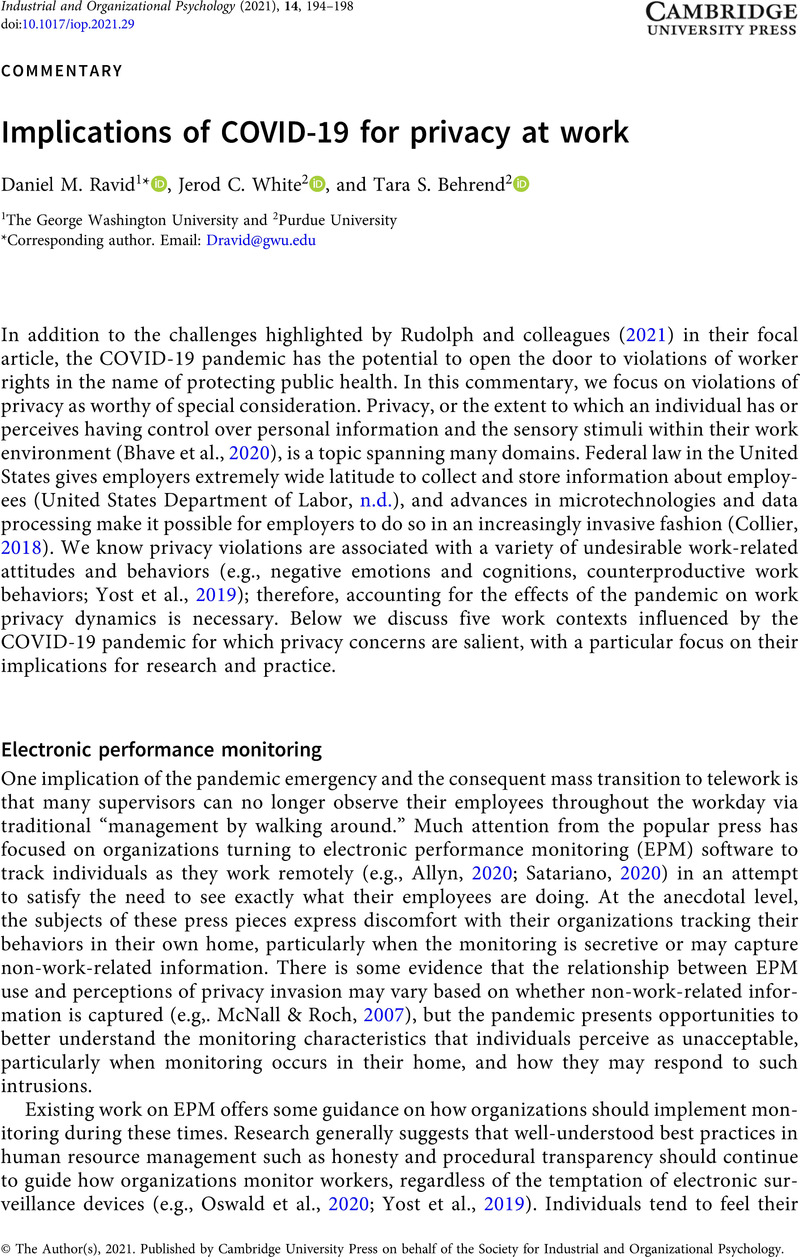Crossref Citations
This article has been cited by the following publications. This list is generated based on data provided by Crossref.
Madanat, Hanan
Ab Rashid, Radzuwan
Hashmi, Umair Munir
Alqaryouti, Marwan Harb
Mohamed, Misrah
and
Al Smadi, Omar Ali
2024.
Jordanian English language educators’ perceived readiness for virtual learning environment.
Heliyon,
Vol. 10,
Issue. 4,
p.
e25766.
Wolff, Mauren Sina
and
Niessen, Cornelia
2024.
Everything Under Control? The Impact of Electronic Monitoring Type and Social Norms on Privacy and Reactance.
Journal of Personnel Psychology,
Vol. 23,
Issue. 3,
p.
134.



